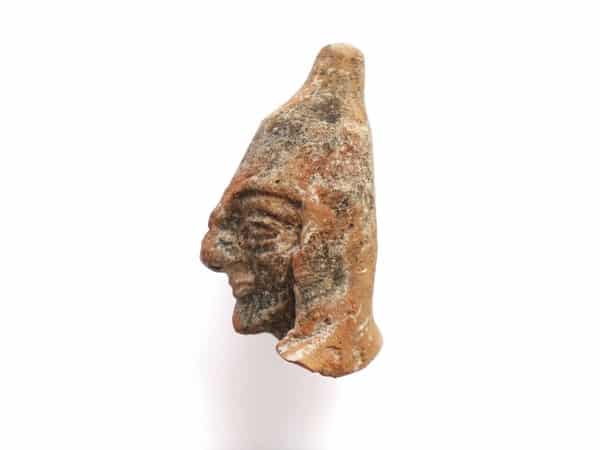An ancient temple, lost to the sands of time but rediscovered in 1885, and then forgotten again until 2021, has finally been unearthed by a German team of archaeologists.
Excavation works at the Sanctuary of Apollo in Pera Orinis were carried out after an initial campaign in 2021 uncovered the remains of ancient masonry.
The latest works, carried out in 2022 and described in a press release by the deputy culture ministry, aimed to explore the sanctuary of Frangissa.
“The current research project aims to explore these complex structures, which often evolved over several centuries, and gain important insights into the functioning of ancient sanctuaries,” the press release explained.
Two years ago, a team of researchers from the German universities of Frankfurt and Kiel successfully located the sanctuary of Apollo at Frangissa near Pera Orinis, which had been known since 1885 but was considered lost.
In 2021, an initial excavation campaign uncovered the remains of ancient masonry, although the interpretation of the complex construction history and its function within the sanctuary area had to remain open for the time being.
In 2022, this work was continued with the aim of not only re-exposing the areas of the 19th-century excavations and documenting them according to modern standards but also exploring the previously unexamined surroundings of this precinct.
The ongoing excavations allow for a closer examination of the building remains that were uncovered in the previous year’s campaign. It is an architectural enclosure of an open district measuring at least 12×17 meters. The walls consist of carefully placed stone sockets, reaching a height of up to 1.20 meters, and are largely intact up to the upper terminating edge.
Based on the current state of knowledge, the construction of this complex can be dated to the Hellenistic period. However, after its construction, the district underwent successive remodeling and expansion.
Towards the end of the excavation, a stepped structure consisting of meticulously hewn blocks was discovered in the immediate vicinity of the courtyard. Such large and high-quality blocks were previously unknown in Frangissa.
While the exact connection between the Hellenistic courtyard and the previous excavations, as well as the core area of the sanctuary, remains unclear at present, its sacred function in relation to the sanctuary has been proven by the rich finds, such as votive figures.
The core of the sanctuary, which also included an open courtyard with a roofed cult room, dates back to the Archaic period.
The newly discovered structures provide evidence for a larger expansion phase of the Frangissa sanctuary during Hellenistic times, significantly increasing the built-up area and expanding the possible uses of the sanctuary. The Hellenistic sanctuary is more than twice as large as previously known.

Another significant find was the discovery of terracotta fragments, initially appearing inconspicuous but of great beauty.
These fragments belong to a larger-than-life male terracotta figure, which, similar to the well-known Colossus of Tamassos in the Cyprus Museum (originating from the same sanctuary), was assembled from several individual parts.
The robe of the figure was intricately decorated with incised ornaments. Similar fragments were previously found in 1885 and taken to the Cyprus Museum. The newly found fragments perfectly match these ancient fragments, confirming the identification of the sanctuary with the site excavated in 1885, which was previously based on various circumstantial evidence.
The planned continuation of the excavation in the upcoming year will further explore the function of the courtyard and its precise connection to the sanctuary core.


